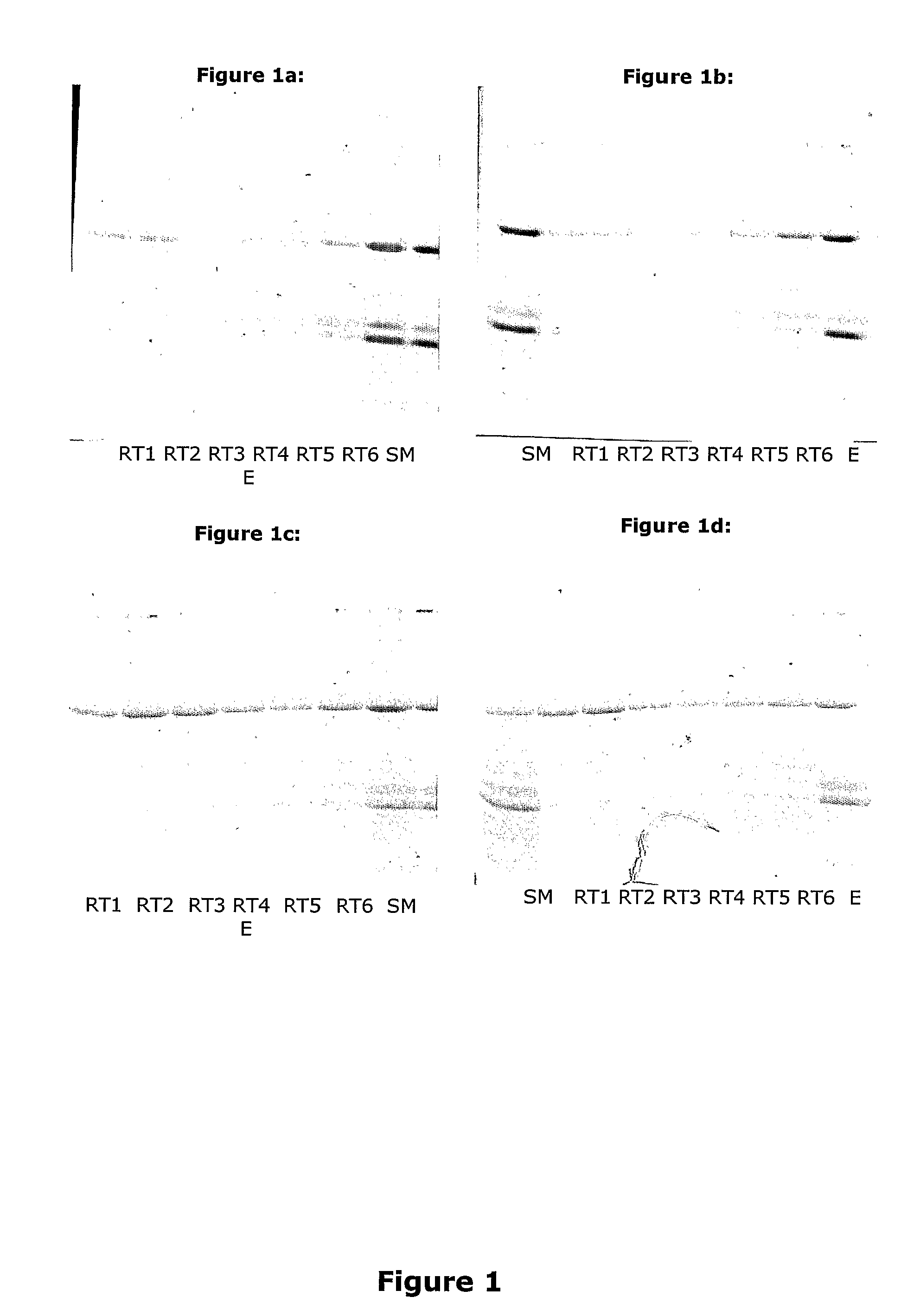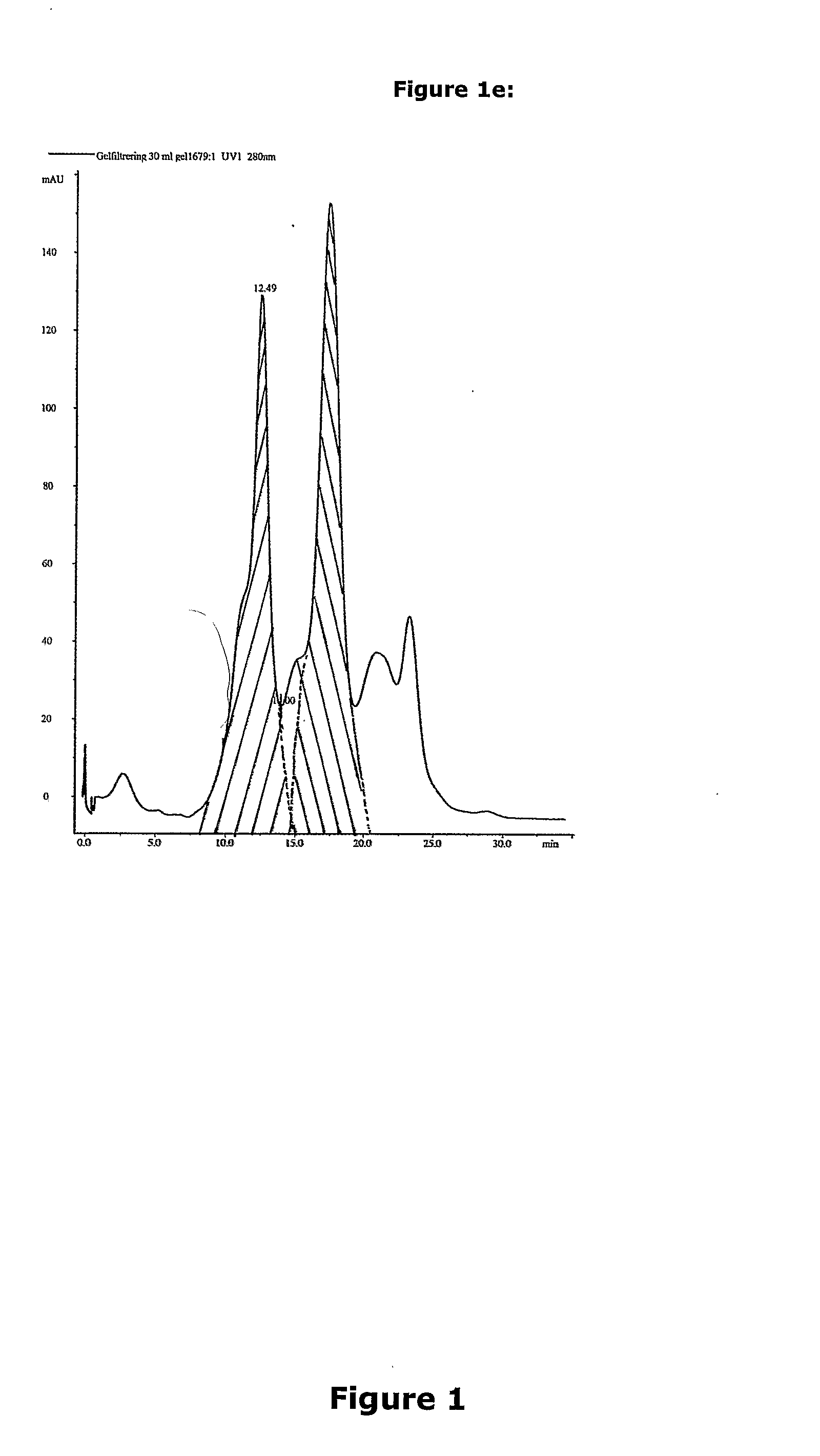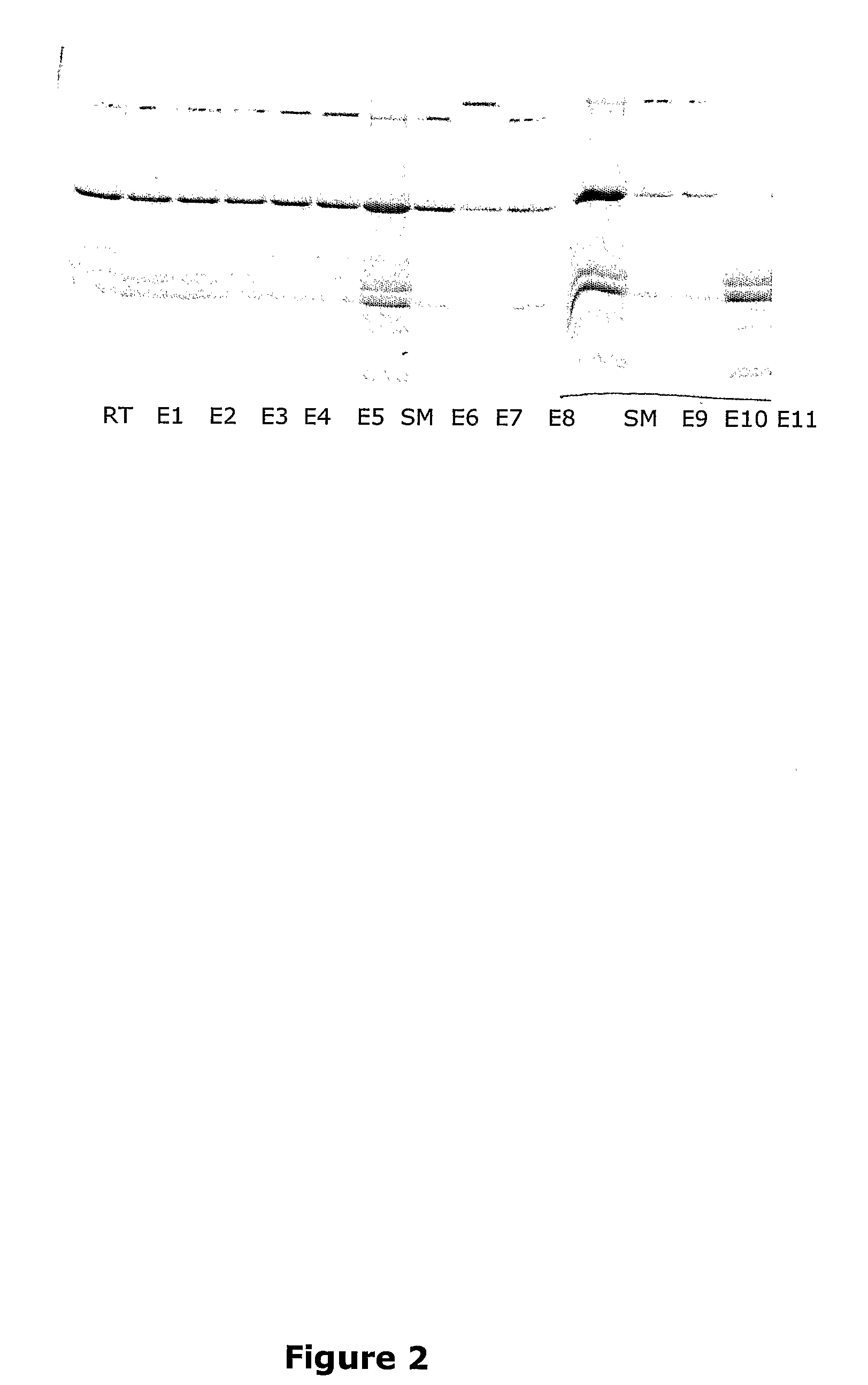Isolation and separation of minimally denatured potato proteins and peptides
a technology of potato proteins and peptides, which is applied in the field of large-scale fractionation and isolation of peptides, polypeptides and proteins (s), can solve the problems of complex separation and economic demands of minimally denatured or modified potato proteins, the inefficiency of industrial-scale production environment, and the inability to isolate proteins from potato juice by mild methods, etc., to achieve the effect of reducing the number of peptides
- Summary
- Abstract
- Description
- Claims
- Application Information
AI Technical Summary
Benefits of technology
Problems solved by technology
Method used
Image
Examples
example 1
Isolation of Potato Proteins from Potato Juice
[0186]Isolation of Patatin and protease inhibitors (PI) with expanded bed adsorption chromatography at 25° C.:
[0187]The potato juice was obtained by washing approximately 2 kilos of potatoes with water and thereafter soaking them in a cold and freshly made solution of 0.05% sodium pyrosulphite blowed through with nitrogen gas for 15 min. The solution comprising potatoes is transferred to a blender and blended until the potatoes are mashed. While blending there was added 100 ml of 0.05% sodium pyrosulphite per kilo of potatoes. The potato juice was collected by filtration under vacuum through two layers of paper. The filter cake was washed with 400 ml of 0.05% cold sodium pyrosulphite. In total 500 ml of 0.05% sodium pyrosulphite was used per kilo of potato.
[0188]Adsorbent
[0189]The adsorbent was based on agarose with integrated tungsten carbide particles resulting in a high density matrix of approximately 2.8 g / ml. The particle size was i...
example 2
Isolation of Potato Proteins from Potato Juice Using 4-Amino Benzoic Acid as the Ligand
[0196]Adsorption of Patatin and protease inhibitors (PI) with expanded bed adsorption chromatography at 25° C.
[0197]The potato juice was produced according to the procedure described in example 1.
[0198]Adsorbent
[0199]Cat. No.: FastLine X051201, UpFront Chromatography A / S. The adsorbent is based on agarose with integrated tungsten carbide particles resulting in a density of approx. 2.8 g / ml. The particle size is in the range of 40-200 μm. The adsorbent comprises 4-amino benzoic acid as the ligand. The ligand concentration was approx. 50 micromoles per ml wet sedimented adsorbent.
[0200]Pre-Treatment of the Potato Juice
[0201]The pH in the extract was adjusted to different values in the range of 4-5 with 1 M hydrochloric acid in four independent experiments.
[0202]The experiment was performed in a FastLine® 10 expanded bed column (Ø=1 cm), UpFront Chromatography. The column was packed with 50 cm of ads...
example 3
Isolation of Potato Proteins from the Potato Juice at High Flow Rate
[0208]Isolation of the patatin and protease inhibitors (PI) with expanded bed adsorption chromatography at 25° C. To achieve a more cost efficient production method of potato juice proteins it is important to run with a high linear flow rate. The experiment is performed at a linear flow rate of 20 cm / min.
[0209]The potato juice and the adsorbent where the same as described in example 2.
[0210]Pre-Treatment of the Potato Juice
[0211]The pH in the extract was adjusted to 5.0 with 1 M hydrochloric acid at 25°. The experiment was performed in a FastLine® 10 expanded bed column (Ø=1 cm), UpFront Chromatography. The column was packed with 50 cm of adsorbent (39,2 ml) and equilibrated with 50 mM sodium acetate pH 5.0, 25° C.
[0212]The potato juice at pH 5.0 was loaded onto the column with a linear flow rate of 20 cm / min. 300 ml was loaded. The run-through was collected in fractions of 25 ml.
[0213]The bound proteins were eluted...
PUM
| Property | Measurement | Unit |
|---|---|---|
| density | aaaaa | aaaaa |
| concentrations | aaaaa | aaaaa |
| density | aaaaa | aaaaa |
Abstract
Description
Claims
Application Information
 Login to View More
Login to View More - R&D
- Intellectual Property
- Life Sciences
- Materials
- Tech Scout
- Unparalleled Data Quality
- Higher Quality Content
- 60% Fewer Hallucinations
Browse by: Latest US Patents, China's latest patents, Technical Efficacy Thesaurus, Application Domain, Technology Topic, Popular Technical Reports.
© 2025 PatSnap. All rights reserved.Legal|Privacy policy|Modern Slavery Act Transparency Statement|Sitemap|About US| Contact US: help@patsnap.com



